Breast Augmentation Vancouver
Breast augmentation is one of the most common aesthetic surgeries, with over 16 million procedures worldwide per year. It is important to have a very thorough discussion, and patients should expect to spend one and a half hours for the primary consultation. Some women have inadequate breast development, while others may have lost shape and volume, often having children, a price they pay for bringing little humans into the world.
The consultation covers obtaining a history, a physical exam, and a discussion about the size, style and positioning of the implant. In addition, a thorough discussion of problems and how they can be prevented and corrected will be had.
The surgery is carried out using a light general anesthetic and is done on a daycare basis.
If the breasts are too droopy, it may be necessary to perform a mastopexy, or breast lift. This can be done with or without an implant, and the pattern of the incisions depends on the degree of drooping.
Recovery depends on the implant positioning as well as the inclusion of a mastopexy. Submuscular positioning of the implant or a concommitent mastopexy means that the recovery will take a little longer. Dr Brown will outline your recovery at the time of the consultation.
The size and shape of the breasts varies depending on the patients’ aspirations as well as her anatomy. During the second consultation the nurse will help the patient try out different sizes in a specific bra. Rather than picking out a specific size, we prefer that the patient picks out a range of sizes she admires. At the time of the operation, Dr Brown will use a sizer to determine which of the patient’s sizes is best. This allows some artistry in the selection.
Most breast augmentations can return to work in 7-10 days, and mastopexies take a little longer. We realize that this is a very sensitive issue, and our staff are excellent in providing support before and after surgery.
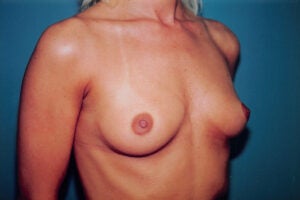 |
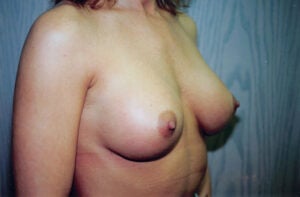 |
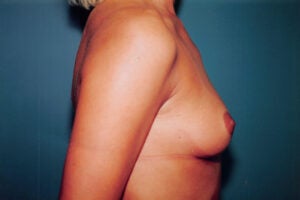 |
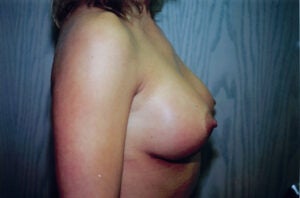 |
This 23-year-old patient had modest breast development, but complained of lack of fullness in the upper part of the breast. A moderate size implant was placed through an intramammory incision, tucked in below the breast.
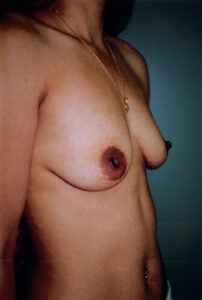 |
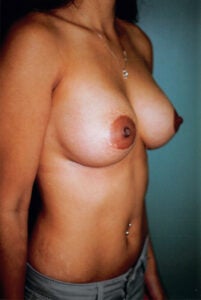 |
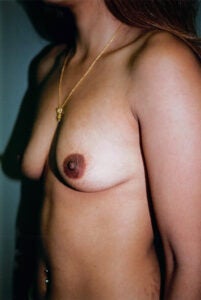 |
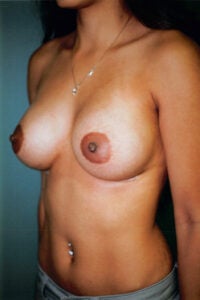 |
Although this patient had a modest droop, by modifying the intramammory fold, an augmentation alone allowed the breast to “swing up” to correct the problem.
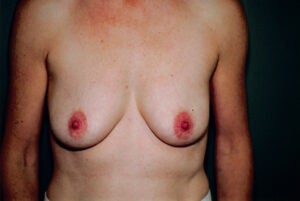 |
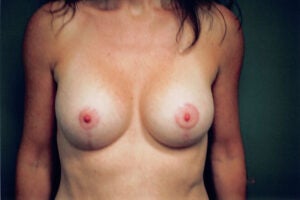 |
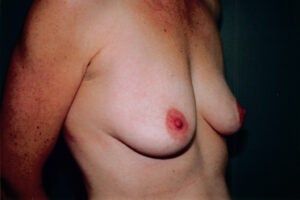 |
 |
This mother of four lost volume and shape after extended breast feeding. The incisions are still somewhat red at 10 weeks. The augmentation was carried out along with a vertical (lollypop) mastoplexy.
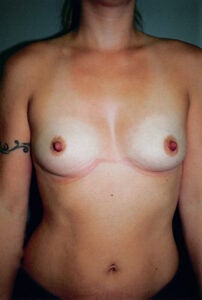 |
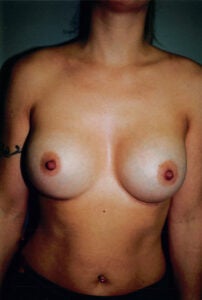 |
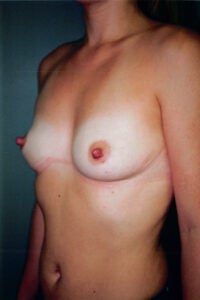 |
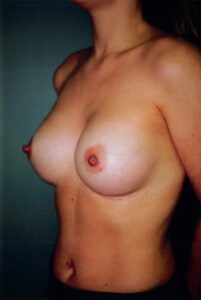 |
This 32-year-old woman requested a C-cup size. Measurements were done and appropriate size implants were used. Cup size is a relatively poor measurement of size change, and we have found out that in house assessment with the patient to be a much more reliable guide to getting the desired size and shape.
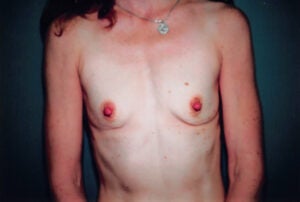 |
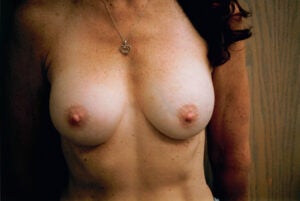 |
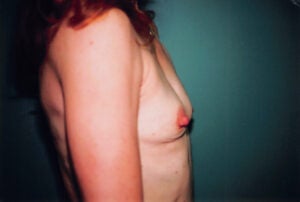 |
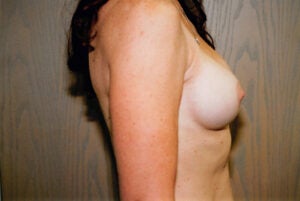 |
This 21-year-old patient wished to have breast enlargement appropriate to her slender body. With the very modest size of her breasts, a subpectoral (submuscular) placement of the implant was mandatory.
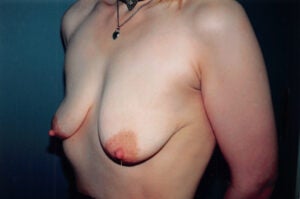 |
 |
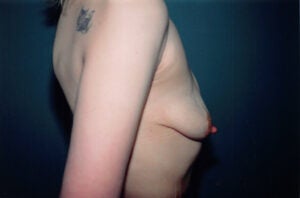 |
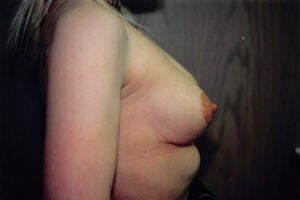 |
This 21-year-old woman had a significant (grade III) ptosis despite not having children. An inverted T pattern was used along with a subpectoral augmentation. Post op photos were taken at 8 weeks.
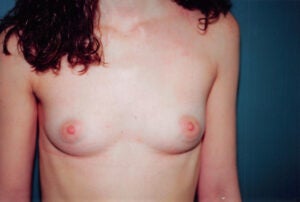 |
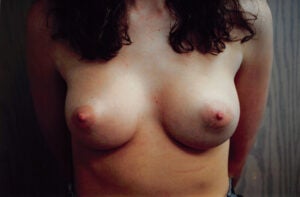 |
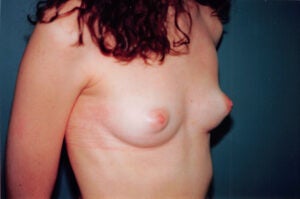 |
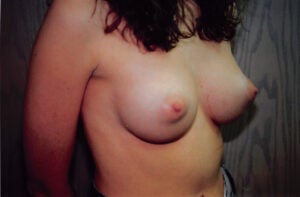 |
This young woman lacked volume, particularly in the upper breast. Subpectoral augmentation with modification of the inframammory fold was carried out.
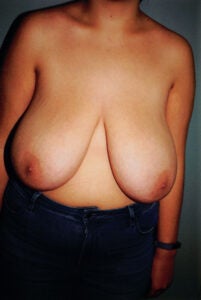 |
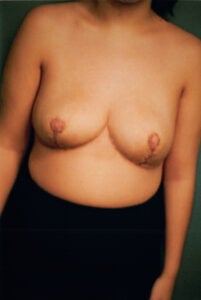 |
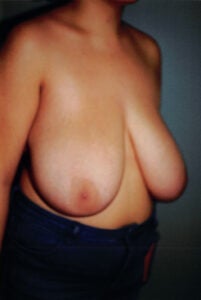 |
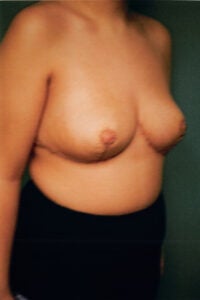 |
This middle-aged patient complained of the droop of her breasts. Because she had voluminous breasts, no implant was required. A mastopexy with volume adjustment was carried out. Post operative photos were taken at 4 weeks with some of the rippling of the incisions still smoothing out.
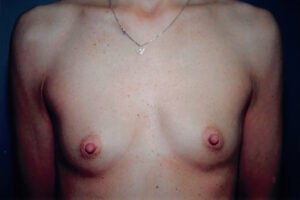 |
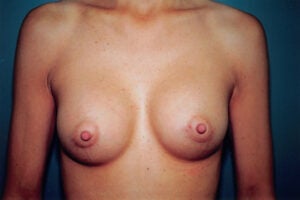 |
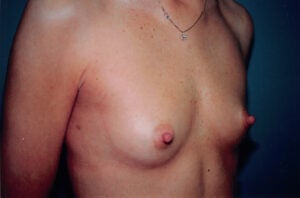 |
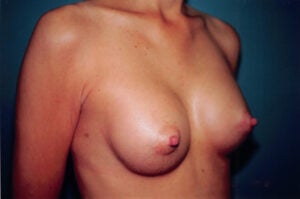 |
This patient had a subpectoral placement of implants through a periareolar incision. Note that there is still a gap between the breasts. This is because the implant must be placed directly behind the nipple areolar complex. Cleavage is accomplished by a pushup push in bra.
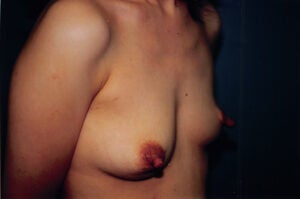 |
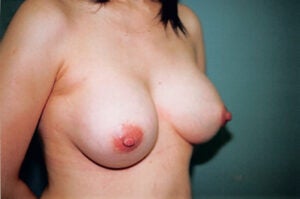 |
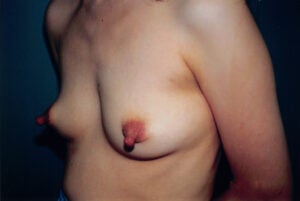 |
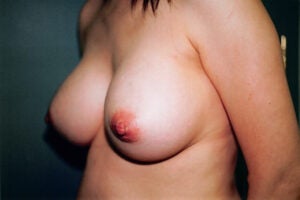 |
Frequently women who have breast fed can develop elongated nipples. Aside from a breast augmentation she has had a nipple reduction.
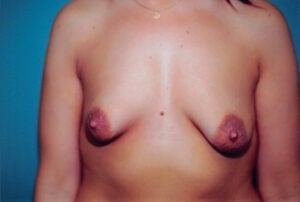 |
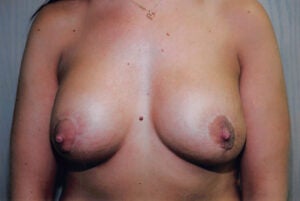 |
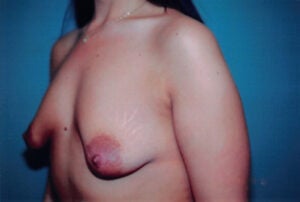 |
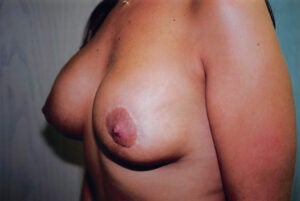 |
This 42-year-old woman had a constricted breast deformity with a very narrow right breast. A modification of the breast anatomy as well as a differential augmentation mastopexy was carried out.
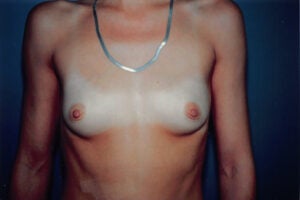 |
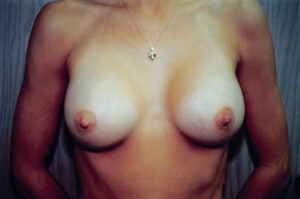 |
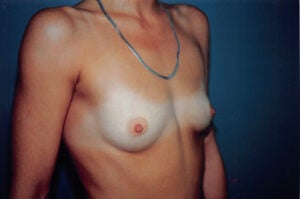 |
 |
This 21-year-old woman wished to have a periareolar incision for her augmentation. Even at 10 weeks the scars are hard to discern.
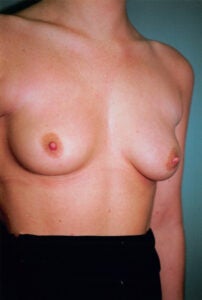 |
 |
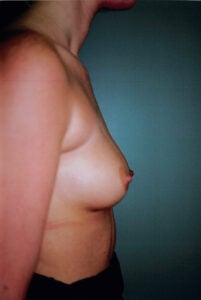 |
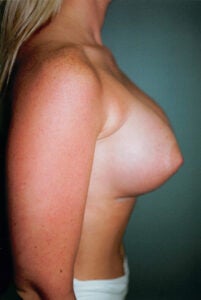 |
This 28-year-old woman requested a very significant increase in volume for professional reasons. Because of the patient’s anatomy, suprapectoral insertion of gel implants was carried out.
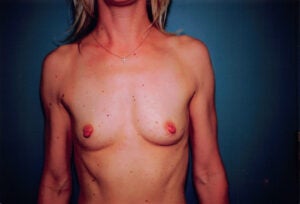 |
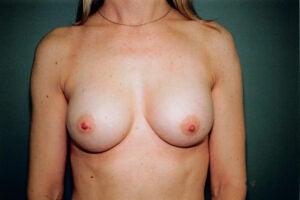 |
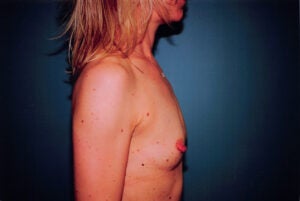 |
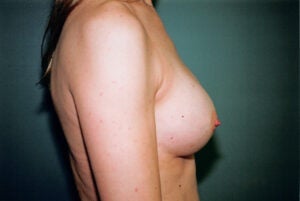 |
This mother of three sustained significant volume loss as well as elongated nipples. She had a subpectoral augmentation as well as a nippleplasty.
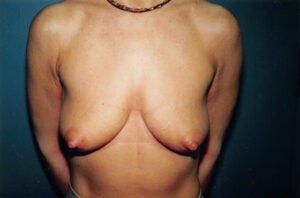 |
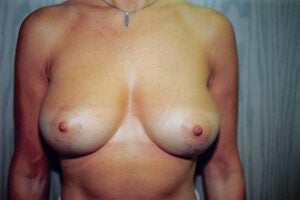 |
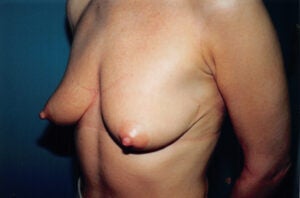 |
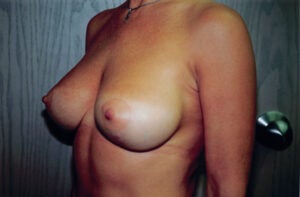 |
This young woman complained about the shape of her breasts with nipples pointed down. She had an inverted T mastopexy as well as a modest augmentation.
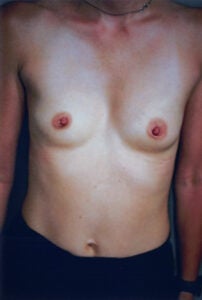 |
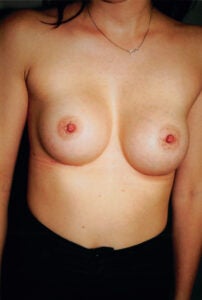 |
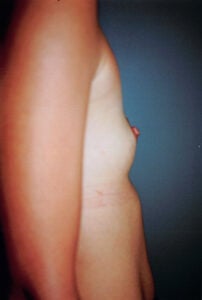 |
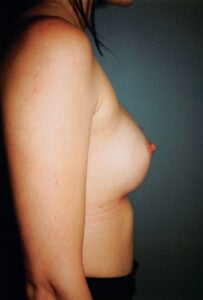 |
This 21-year-old patient complained of “the dip of her upper breast”. As intramammory incision was used in order to insert an ultra-high profile implant.
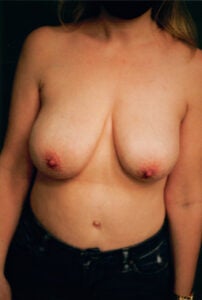 |
 |
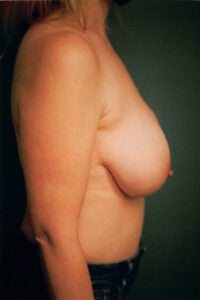 |
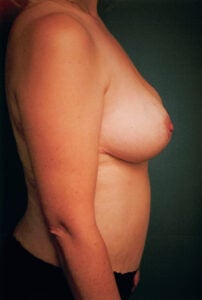 |
This 28-year-old mother of two complained about her breast droop. A mastopexy with volume reduction was carried out using an inverted T technique.
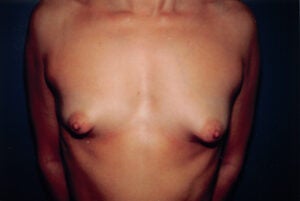 |
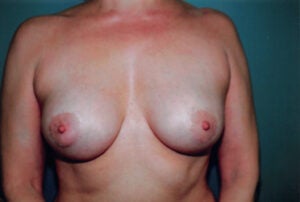 |
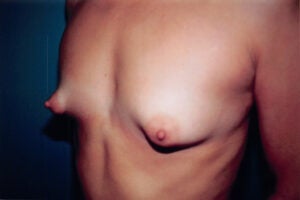 |
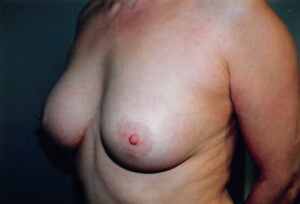 |
This 42 year old woman had a classic tubular breast deformity with very narrow breasts, ptosis, and over projection of the nipple areolar complex. The peripheral tissues have been expanded, the intramammory crease has been lowered, and the nipple are recessed.
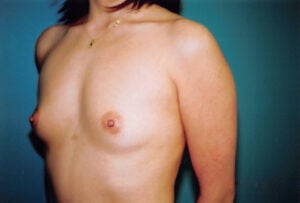 |
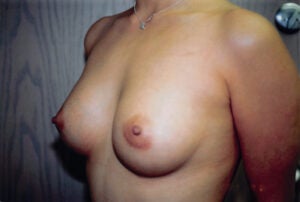 |
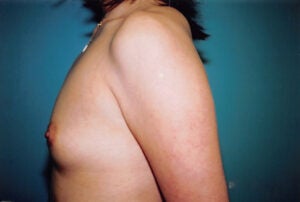 |
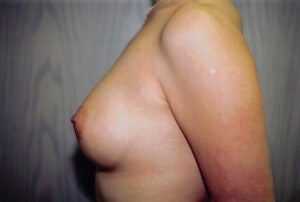 |
Augmentation is frequently more about shape as well as size. Modest subpectoral implants help with this. The lateral view should be shaped more like a pear than a coconut.
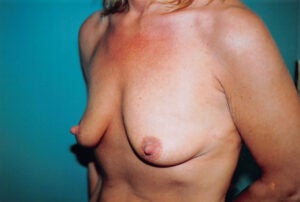 |
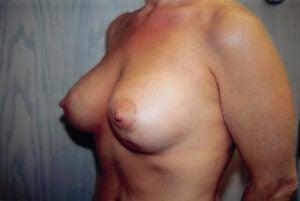 |
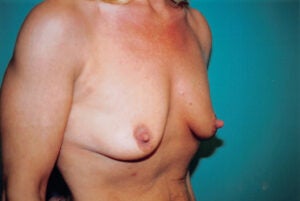 |
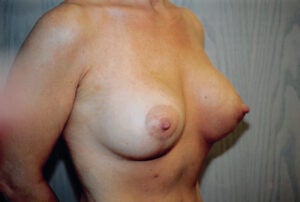 |
This mother of four had an abdominoplasty as well as a vertical incision mastopexy. This is a fairly common combination of procedures, both of which can usually be done at the same time
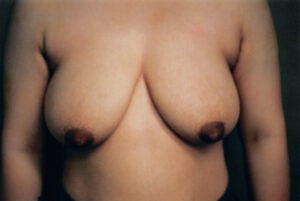 |
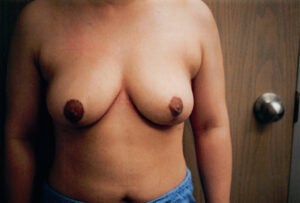 |
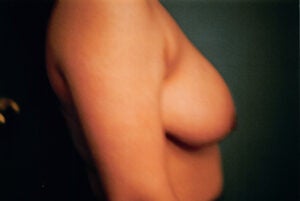 |
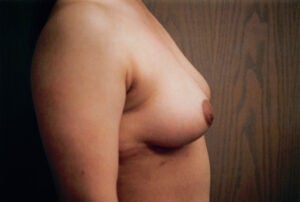 |
This woman requested a lift to her heavy breasts. A mastopexy with volume adjustment was carried out. Generally with very droopy breasts, an inverted T technique attains a better shape than a vertical (lollipop) pattern.
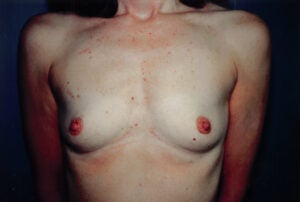 |
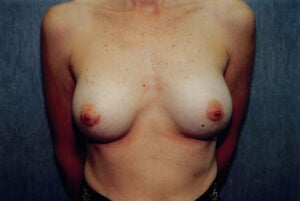 |
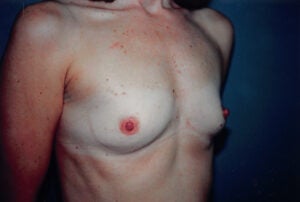 |
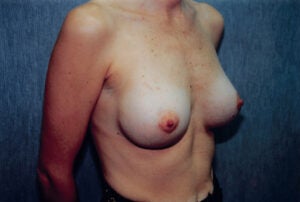 |
This young woman requested an augmentation via a periareolar approach. The incisions are still quite red and 6 weeks. Sometimes incisions can take up to a year to fade.
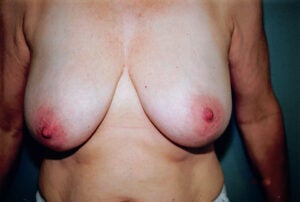 |
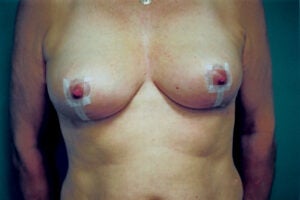 |
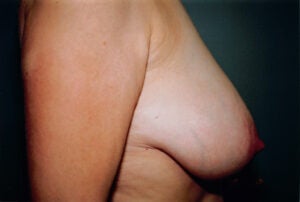 |
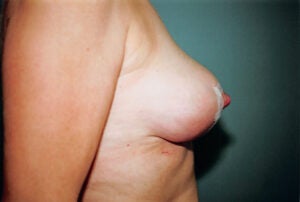 |
This 47-year-old woman complained of her droopy breasts. She had a mastopexy done. The taping system is used for scar minimalization.
